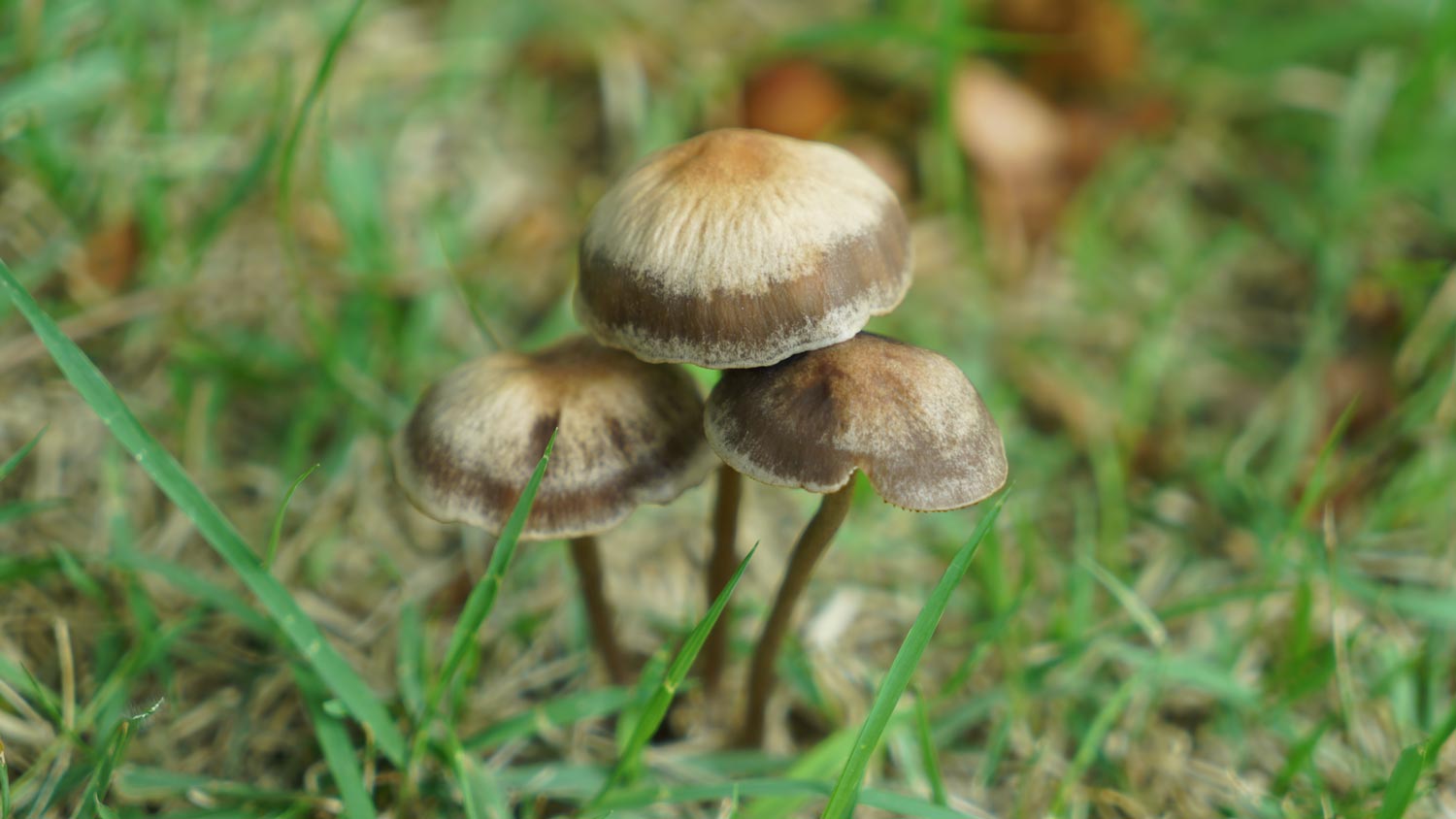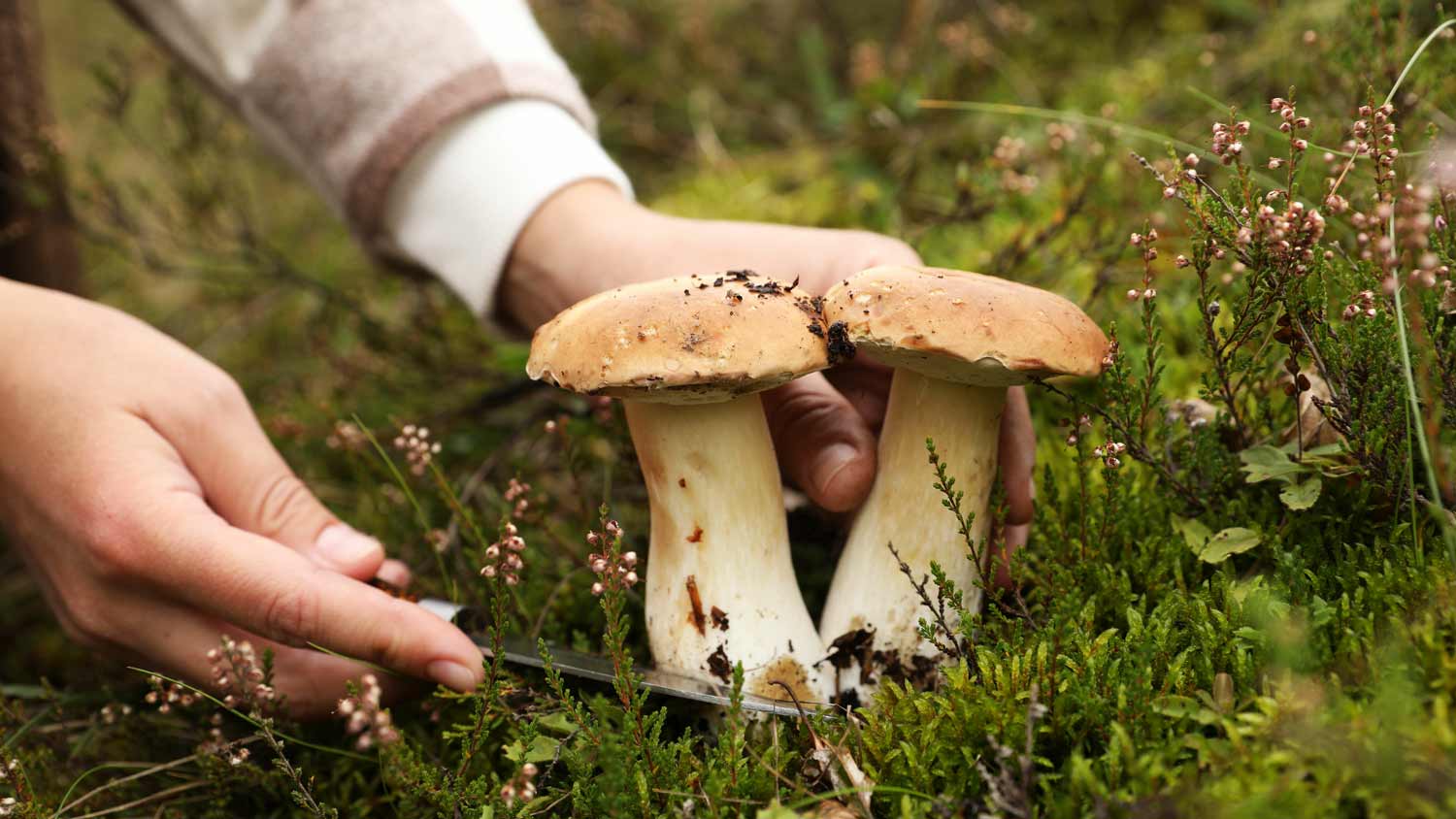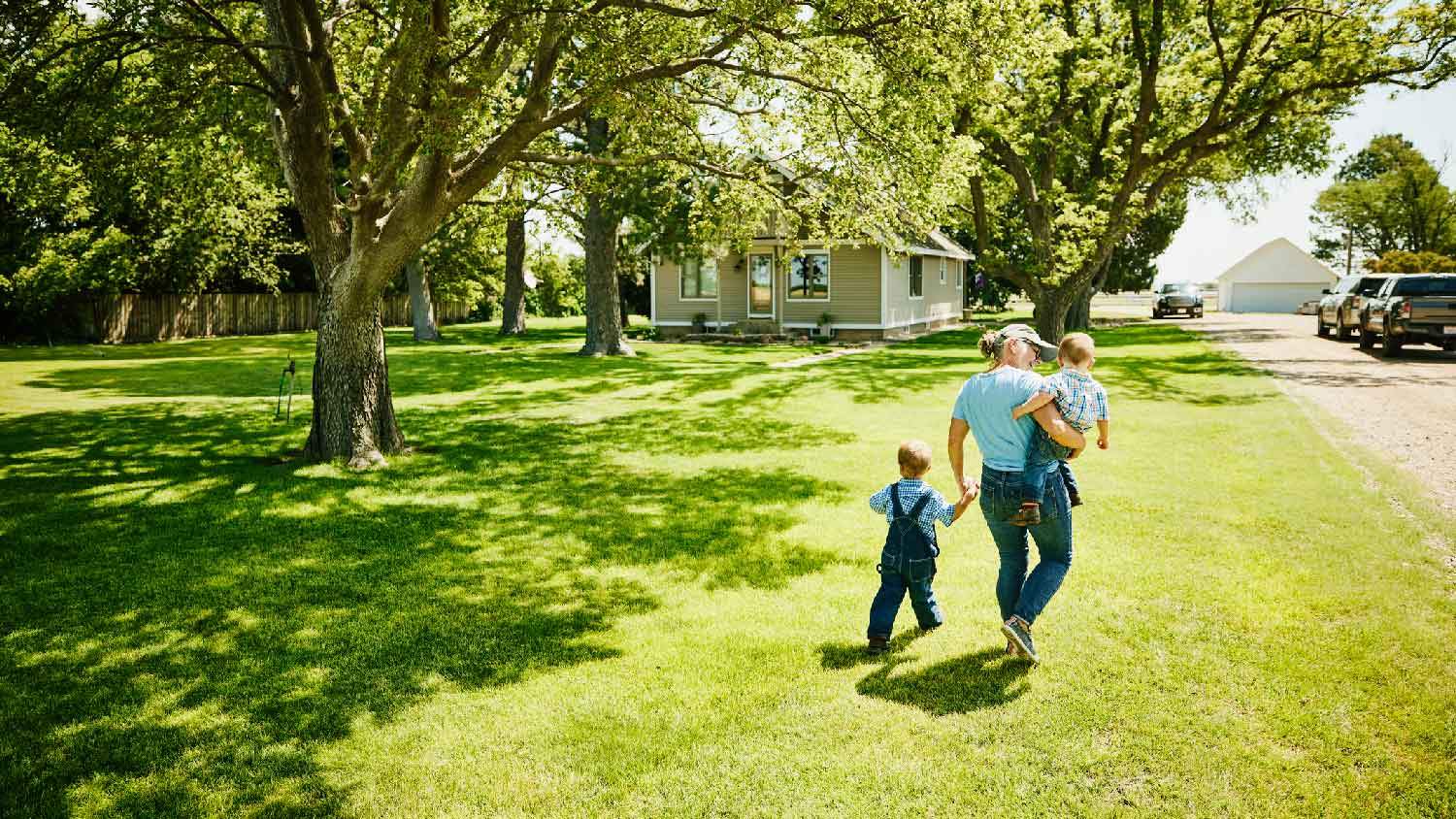
How much it costs to rent a lawn aerator depends on what kind you rent and how long you rent it for. Read on for the full details.
Mushrooms are a sign of a healthy lawn, but you can prevent them from growing in your grass


Mushrooms in your grass are usually harmless and even beneficial.
Mushrooms thrive on moisture and dead plant material.
The visible part of the mushroom is only the spore-bearing fruit of the fungus.
Mushrooms can fertilize your lawn.
Wondering why there are mushrooms growing in your grass? In areas with poor drainage, fallen branches, or stumps, mushrooms will tend to flourish. For the most part, mushrooms are friendly and a good sign that your soil and plants are healthy.
But if you don’t like their appearance, you can improve your lawn’s drainage and remove dead wood to keep them to a minimum. Here are the reasons you might find mushrooms in your grass and when to hire a local lawn care pro or tackle mushroom control yourself.
Yard mushrooms can sprout anywhere with decaying or dead wood, plant material, and moisture. These locations can include your lawn, especially if you have areas with poor drainage, empty space from a previous stump, shrubs, or fallen branches. These elements can feed mushrooms the wood material they need to thrive. Since mushrooms are spread by their spores, they can be introduced by wind or tracked in on shoes or paws.

Besides being a sign of good soil health, mushrooms and other fungus can help plants survive stress, including drought and disease. Fungi can intermingle with plant roots and help plants communicate through the dissemination of chemical and electrical signals, plus help plants absorb water and nutrients from the soil. Mushrooms can also break down tough materials like stems, sticks, and dead tree roots that can cause thatch on your lawn and create tough growing conditions for future plantings.
Since mushrooms thrive in environments with lots of moisture, shade, and decaying plant material, preventing them is as simple as limiting these elements in your lawn. If you need help with your chosen mushroom removal method, don’t hesitate to hire a local lawn care professional for assistance.
You can improve drainage in your yard in a few different ways. You can aerate your lawn to allow water to absorb more quickly into the soil, with the help of a professional lawn aeration service. Another option is to add gravel to the edges of your lawn where rainwater might collect. For more time- and labor-intensive projects, you can consider methods like regrading your lawn.
Trimming trees and shrubs that shade a particularly moist area of your lawn can help discourage mushroom growth. Since sunlight will help to dry out a damp patch, this method can be a win-win for mushroom mitigation.
Removing the leftover stumps from dead trees or shrubs and the dead roots will limit the food sources for mushrooms in your grass. If you have an area of particular concern where mushrooms repeatedly grow, it’s likely that there’s some decaying wood under the soil.
Removing dead plant material like stems and grass clippings from your lawn will reduce food sources for mushrooms. Dethatching your lawn can also improve drainage in your soil, limiting the moisture available to mushroom spores on the lawn’s surface.
Wood chips used as mulch can sometimes feed mushrooms and contribute to their growth. Limiting wood chips and especially keeping them clear of damp areas can help keep mushroom growth at bay.

Since the tops of mushrooms are only the reproductive parts of the fungus containing the spores, you likely won’t kill off mushrooms by plucking them. However, the part that lives above ground is the obtrusive part for a grass lawn, so it tends to be the most important part to get rid of. Follow these methods for removing mushrooms from your lawn.
You can remove mushroom tops by mowing over them. If you need to mow the lawn anyway, this method will work great, and it will take several months for new mushrooms to grow. Using a robotic mower can nip off the mushrooms before they get big enough to cause a problem.
Allowing mushrooms to shrivel in the sun or even encouraging some drainage after they sprout to dry them out can help kill them. Allowing sunlight to flood the area is a great natural way to get rid of mushrooms growing in your grass.
Picking mushrooms when you see them is sufficient to control mushrooms sprouting on your lawn after a rainstorm. Since mushroom spores spread by wind, there’s no way to eliminate them, but snapping off the tops will keep them under control.
From average costs to expert advice, get all the answers you need to get your job done.

How much it costs to rent a lawn aerator depends on what kind you rent and how long you rent it for. Read on for the full details.

The cost to renovate your lawn depends on the extent of the damage. Our guide will show you how much lawn renovation costs.

Artificial grass is a low-maintenance alternative to traditional turf. Learn how much artificial grass installation costs and what affects your price.

Why is my yard so soft and soggy? Use this helpful guide to diagnose the issue and implement a solution that will restore your yard’s health.
Fertilizer burns can result in discolored or dead grass. These nine tips will help prevent lawn burn and keep your yard looking healthy and green with fertilizer.

Learn when the best time to mow new grass, plus some considerations to consider in this short informational guide for homeowners.